Clabber Girl Rises To The Rescue!
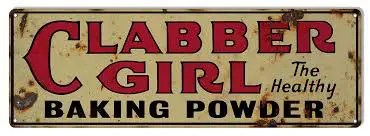
Before baking powder hit the scene in 1856, making cake was not a piece of cake, but the invention of baking powder changed everything – including the face of modern motorsports.
In early America, making a cake was an ordeal. “The flour should be dried before the fire, sifted and weighed; currants washed and dried; raisins stoned; sugar pounded, and rolled fine and sifted; and all spices, after being well dried at the fire, pounded and sifted,” reads a common cake recipe in the 1841 cookbook Early American Cookery.
Besides this grueling work, you had to plan ahead. If you wanted your cake to be fluffy and airy, rather than dense and flat, you would need to do some serious work make it rise. For most of human history, the main rising agent has been yeast. As these finicky little fungi grow and divide, they breathe in oxygen and release carbon dioxide like we do. Mix them into dough and they’ll eventually fill it with the familiar bubbles of carbon dioxide that make baked goods rise—a process known as leavening.
In the 18th century and earlier, most baking was dictated by the delicate whims of respiring yeast. And we aren’t talking about dry or refrigerated yeast; this was way before fridges and commercial packaging. First you had to make the yeast, by letting fruit or vegetables or grains ferment. Once you’d done that, your hard-earned rising agent could still be killed or weakened by temperatures that were too hot or too cold, or contamination from bacteria. (Many early recipes recommend obtaining the help of a manservant.)
Even when it did work, leavening was a tedious process. “You’re talking upwards of 12 hours of rising, usually more like 24 hours,” says Jessica Carbone, a scholar in the National Museum of American History’s Food History Project. Forget about the joy of waking up and deciding to make pancakes.
So what changed? In a phrase, baking powder. Without this miraculous white substance, “We literally would not have cake as we know it now,” says Linda Civitello, a food historian and author of the new book Baking Powder Wars. Today, baking powder “is like air, water,” Civitello says. “It’s the one ingredient everyone has on their shelf.” This cheap chemical factors into countless baked goods we buy and make every day, from donuts to hamburger buns. But how did this revolution-in-a-can come about?
In the 18th century, American bakers were experimenting with less labor-intensive ways to make things rise. In addition to beating air into their eggs, they often used a kitchen staple called pearlash, or potash, which appears in the first American cookbook, American Cookery, in 1796. Made from lye and wood ashes, or baker’s ammonia, pearlash consisted mainly of potassium carbonate, which also produces carbon dioxide quickly and reliably. But this agent was difficult to make, caustic, and often smelly.
In 1846, the introduction of baking soda, a salt that can react with an acid to create carbon dioxide, made things easier. But baking soda still needed to be mixed with an acid. Since it was cheap and widely available, bakers often used sour milk. This process was unpredictable since it was hard to control how acidic the sour milk actually was, meaning it was difficult to know how much baking soda to use or how long to bake for.
Baking Soda (Sodium Bicarbonate):
- Composition: Pure sodium bicarbonate, a base.
- Activation: Requires an acidic ingredient (like lemon juice, vinegar, buttermilk, or yogurt) and moisture to activate. When combined with an acid, it produces carbon dioxide gas, which helps dough or batter rise.
- Usage: Often used in recipes that already contain an acidic component. The reaction happens quickly, so the batter usually needs to be baked immediately after mixing.
Extra Credit: 10 Surprising Uses For Baking Soda
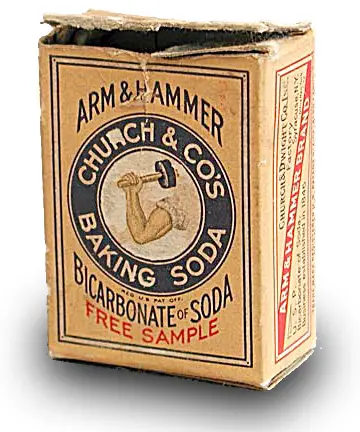
English chemist Alfred Bird created the first product resembling baking powder in the late 1840s. Bird combined cream of tartar (an acidic powder composed of potassium bitartrate) and baking soda, keeping the two apart until they were to be used so they wouldn’t react too early. Unfortunately, cream of tartar was an expensive byproduct of winemaking that had to be imported from Europe, meaning it was out of reach for many poorer Americans.
In 1856, this need for a viable alternative drove a young chemist, Eben Norton Horsford, to create and patent the first modern baking powder. Horsford worked at a time when chemistry was only just beginning to be considered a respected field, and ended up creating the first modern chemistry lab in the United States at Harvard University. By boiling down animal bones to extract monocalcium phosphate, Horsford developed an acid compound that could react with baking soda to create those desirable CO2 bubbles.
“It’s really the first chemical that opens the floodgates for chemicals in food,” Civitello says.
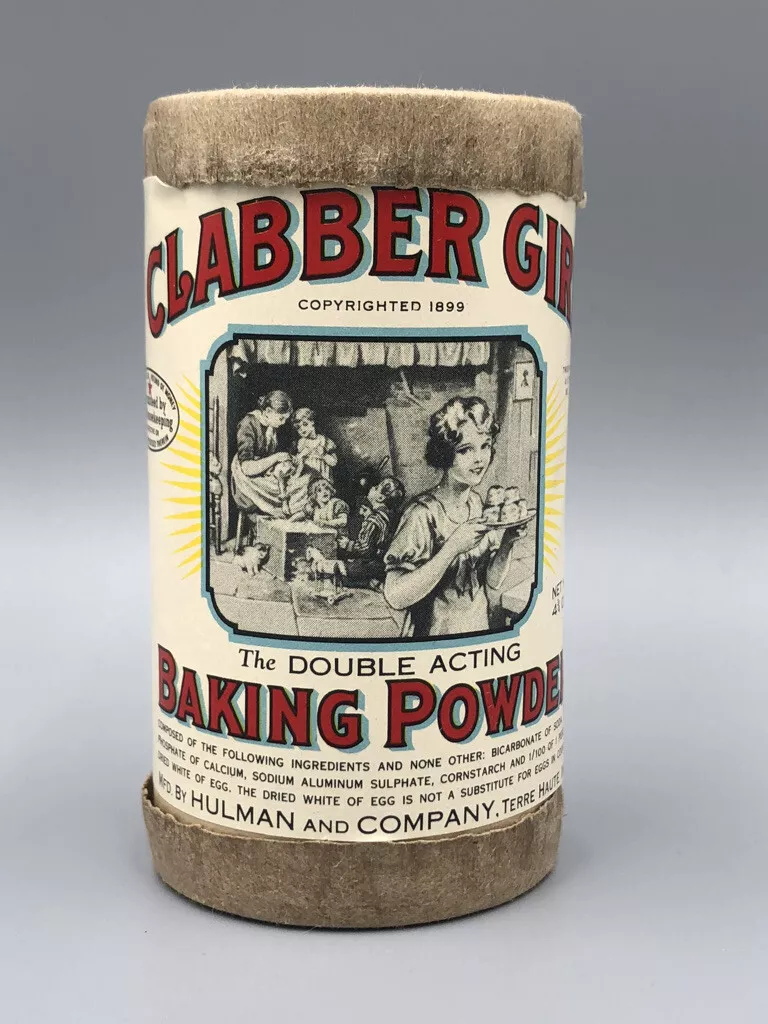
The Clabber Girl name brand comes from the word “clabber”, a type of sour milk. In the early 1800s, people mixed clabber with pearl ash, soda, cream of tartar, and a few other ingredients to make what we know today as baking powder. The first baking powder brand by Hulman and company was the “Milk Brand”.
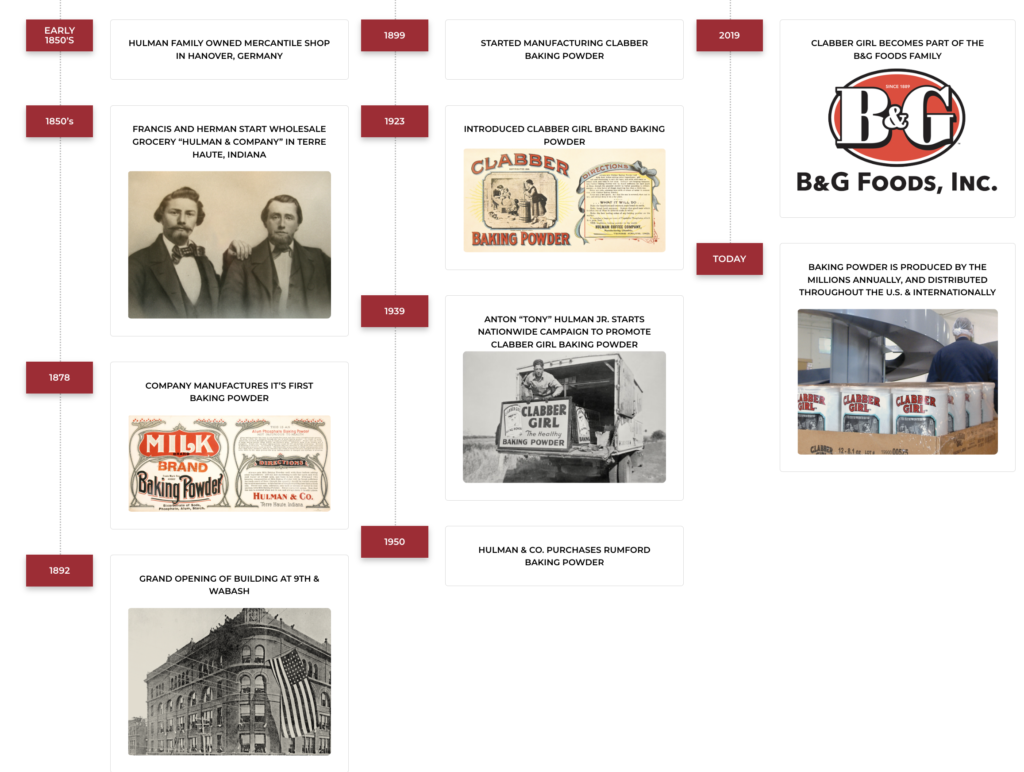
Baking Powder:
- Composition: A combination of baking soda, an acid (usually cream of tartar), and a moisture-absorbing agent (like cornstarch).
- Activation: Baking powder is double-acting. It has two stages of activation: the first occurs when it gets wet (mixing with liquid), and the second occurs when it is exposed to heat (during baking). This allows for a slower, more controlled rise.
- Usage: It can be used in recipes that do not contain acidic ingredients, as it already contains an acid necessary for the leavening process. Since it is double-acting, the batter doesn’t need to be baked immediately.
Key Differences:
- Acid Requirement: Baking soda needs an acidic ingredient to activate while baking powder contains its own acid.
- Speed of Reaction: Baking soda reacts quickly and should be baked immediately while baking powder allows for a delayed rise.
- Taste Impact: Using too much baking soda without enough acid can leave a bitter taste while baking powder is more neutral.
In summary, baking soda is best for recipes with acidic ingredients, while baking powder is more versatile and allows for consistent results in recipes without additional acids.
The Hulman brothers, Francis and Herman, started Hulman & Co., a dry goods business in Terre Haute, Indiana, in 1850. Within a few years, Herman developed his first baking powder recipe, which used clabber. In 1899, Hulman & Co. introduced the “Clabber Brand” to indicate that their baking powder replaced clabbered milk. The brand was renamed “Clabber Girl” in 1923 due to a new federal law about truth in labeling. The name change responded to the overwhelming consumer response to the new brand.
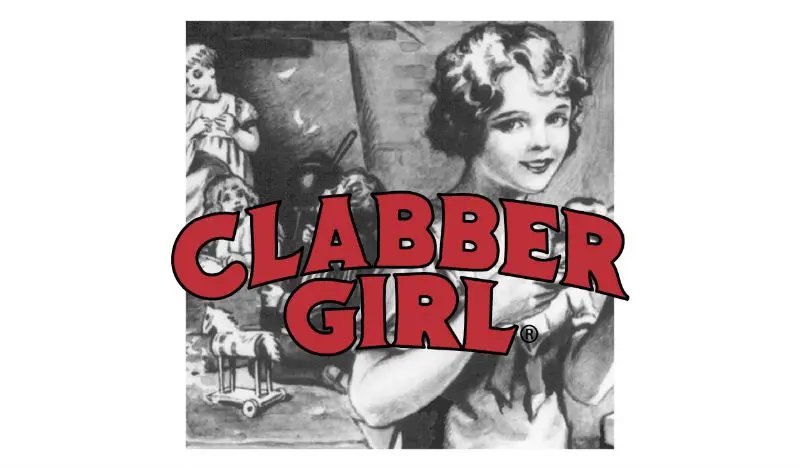
In the 1930s, Tony Hulman and his sales team would visit farms and trade them a can of baking powder in return for displaying a product sign on their fence post. They visited small grocers and businesses and even made Clabber Girl tape for butchers to wrap around meat purchases just to get the name out in front of the public. This was one of the first nationally distributed brands, and was a real grassroots marketing campaign.
Anton “Tony” Hulman Jr., an American businessman from Terre Haute, Indiana, purchased the Indianapolis Motor Speedway (IMS) from Eddie Rickenbacker on November 14, 1945 for $750,000, which is equivalent to about $11 million today.
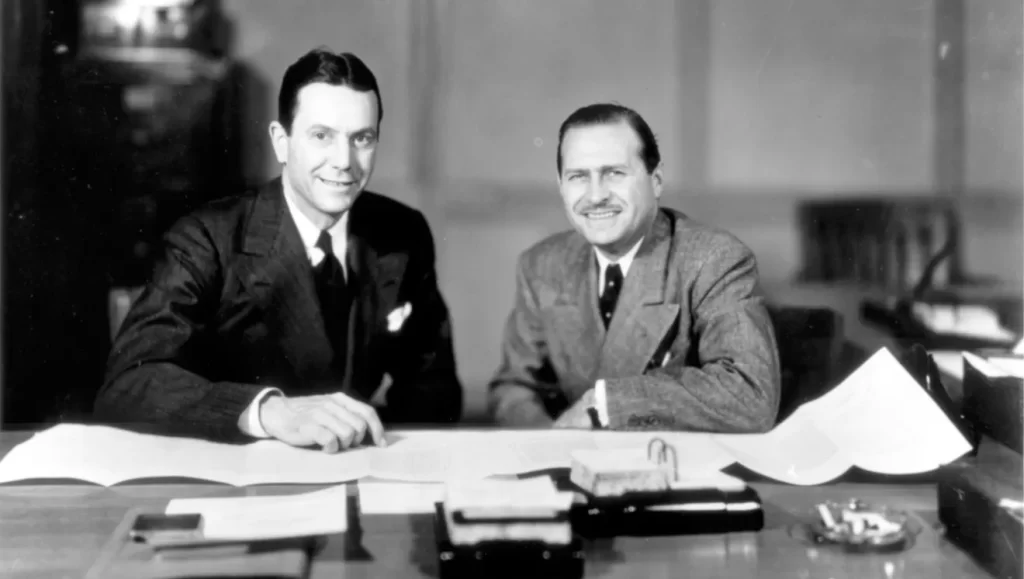
“Tony Hulman was rather like Howard Hughes,” said IMS historian Donald Davidson of the legendary business magnate, pilot, engineer, film enthusiast and philanthropist. “He could see into the future – he had a vision. As terrible a place as this was back then, he could see through all that and see what it might become. All his friends were saying, ‘Tony, it’s too late.’”
Famously, even Hulman’s mother, Grace Smith Hulman, told her 44-year-old son that fall: “Tear it down and start all over.”
But, as Davidson tells it, “He just stood there with this grin on his face.”
Hulman’s purchase brought racing back to the IMS after a four-year hiatus following World War II. “Someone once described it as an abandoned Army barracks,” Davidson said. “All boarded up, weeds sprouting, paint peeling and faded.”
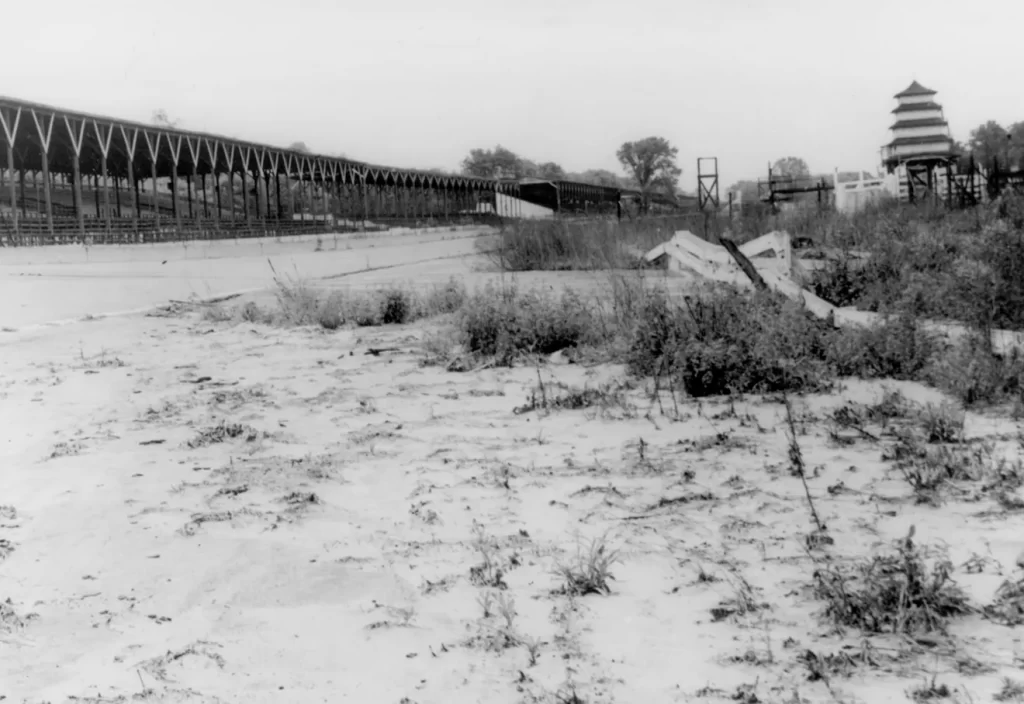
How the Speedway looked in 1945
Hulman would add a new Pagoda, instill the idea of a pit lane, and eventually pave over all but one 36-inch-wide swath of bricks near the start-finish line, forever preserving that portion of The Brickyard’s birth while ushering it into the future.
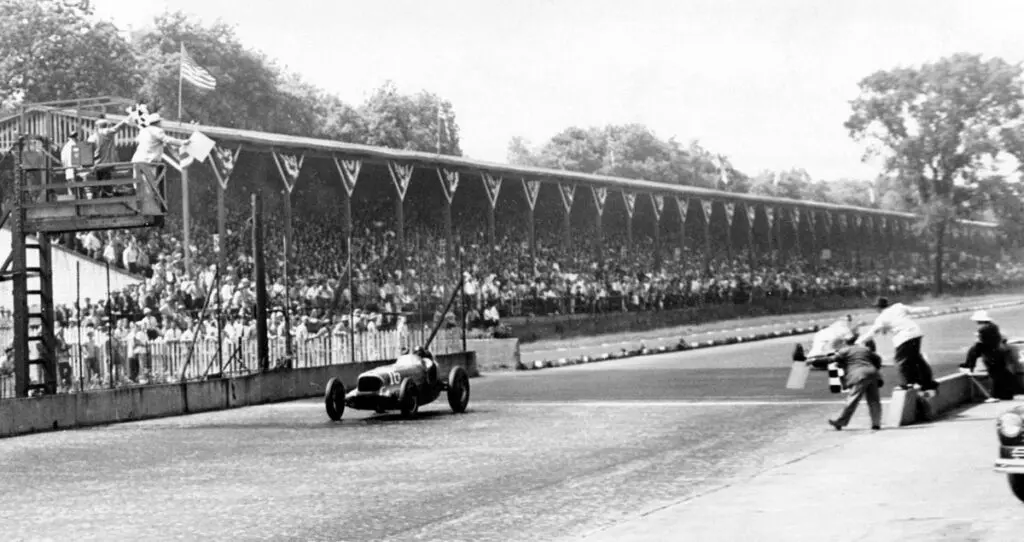
IMS remained primarily an Indy 500-only facility until 1994, when NASCAR began racing there. Hulman’s grandson, Tony George, later created the Indy Racing League, which led to competition between the IRL and Championship Auto Racing Teams for drivers and facilities. The series eventually reunited in 2008.
The Hulman family owned the IMS until 2019, when Roger Penske and the Penske Corporation bought it for between $250 million and $300 million.
Tony Hulman’s Influence
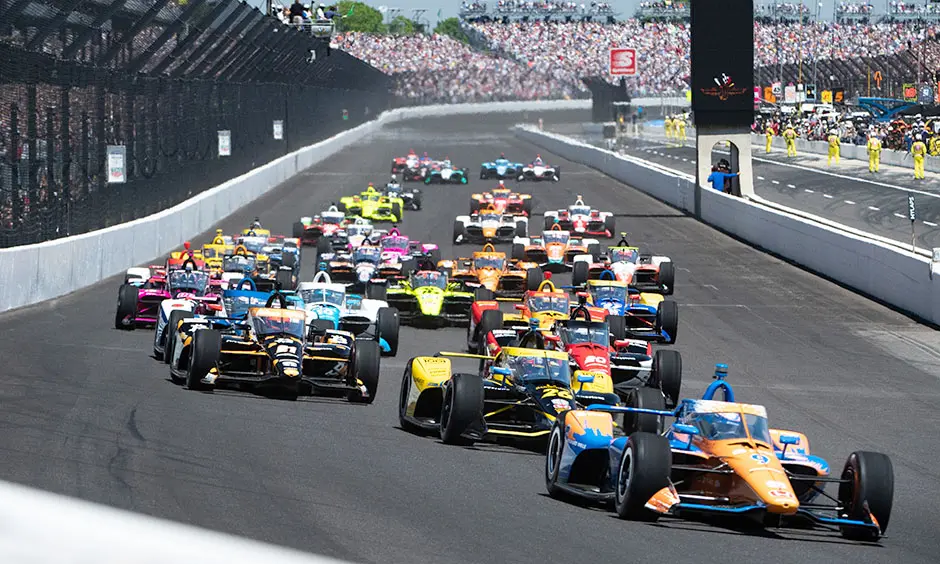

Welcome to 3-Minutes A Day University, where you can learn a little about a lot of things every day in three minutes or less. We help you expand your knowledge and understanding of the real world, and 3-MAD University is tuition-free. Our wide-ranging syllabus includes a fascinating insight into topics including Health and Medicine, Science, Sports, Geography, History, Culinary Arts, Finance and the Economy, Music and Entertainment, and dozens more. You will impress yourself, your friends, and your family with how easy it is to learn facts and perspectives about the world around you. One topic you will never find covered is politics. We hope you enjoyed the previous three minutes. If you liked this post, please pass it along to a friend.
Was this email forwarded to you? Subscribe Here.
© Copyright 2024. 3-Minutes A Day University All Rights Reserved. Unsubscribe

